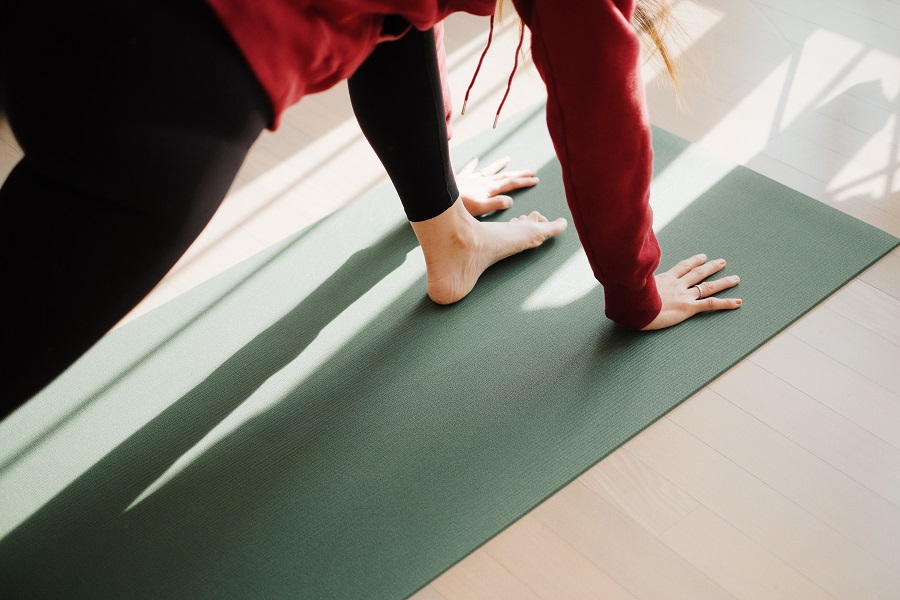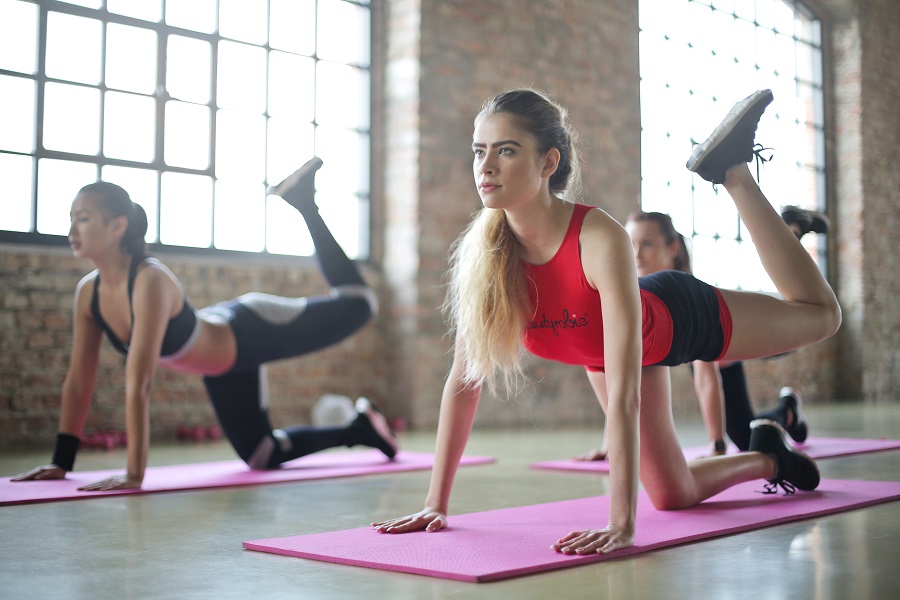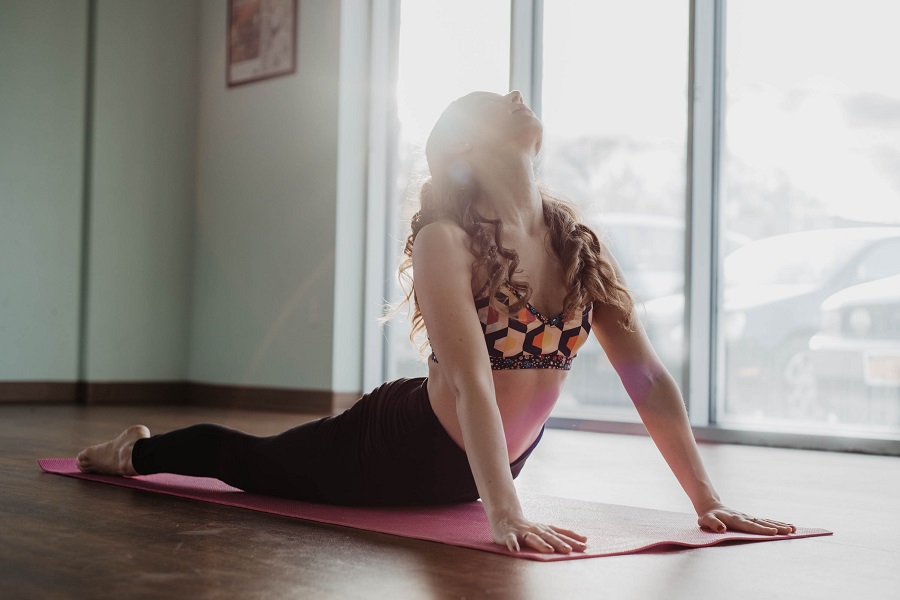
In an age of perpetual screen-time and desk-bound duties, our posture often bears the brunt of modern lifestyles. Hunched shoulders, tilted necks, and curved spines are not merely aesthetic concerns—they are tell-tale signs of deeper musculoskeletal issues, frequently leading to chronic pain or discomfort. Enter Pilates, a game-changer in the realm of physical well-being. Far from just another fitness fad, Pilates is a holistic journey, seamlessly blending body and mind to carve out a path from poor posture to empowering physical prowess.
Jump to:
- What is pilates
- What is pilates good for
- What is reformer pilates
- Wall pilates
- How many calories does pilates burn
- Pilates when pregnant
- How often should you do pilates
- Pilates vs yoga
- Is Pilates a good way to Lose Weight?
- What to wear to pilates
- Pilates at home
What is pilates
Pilates is a physical fitness system developed in the early 20th century by Joseph Pilates. It emphasizes posture, balance, and flexibility by strengthening the body, particularly the core. Pilates combines controlled movements with focused breathing patterns. The exercises can be performed on a mat or with specialized equipment, like the Reformer.
What is pilates good for
Pilates is excellent for improving core strength, flexibility, posture, and balance. It can be beneficial for individuals recovering from certain injuries, seeking better muscle tone, or those wanting a fitness routine that also emphasizes mindfulness and body awareness.
- Enhanced Core Strength: Pilates fortifies the body’s ‘powerhouse’—the abdomen, lower back, hips, and buttocks, leading to improved posture and stability.
- Improved Flexibility: The exercises focus on lengthening and stretching muscles, promoting greater flexibility.
- Better Posture: Regular Pilates practice helps in maintaining a tall, upright posture, which is crucial for spine health.
- Balanced Muscle Tone: Pilates offers a full-body workout, ensuring balanced muscle development without overemphasis on one particular muscle group.
- Mind-Body Connection: The concentration required in Pilates fosters a deep sense of mindfulness and body awareness.
What is reformer pilates
Reformer Pilates involves a specialized piece of equipment called the “Reformer.” The Reformer is a bed-like frame with a moving carriage, springs for resistance, ropes, and a footbar. It offers a dynamic workout by providing resistance to the body’s movements, which can be adjusted based on the springs’ tension. Reformer Pilates can target specific muscle groups more intensively than mat Pilates and offers a wider variety of exercises.
What is wall pilates
Wall Pilates, often referred to as “Wall Unit Pilates,” utilizes a wall-mounted unit that includes springs, bars, and straps. The wall unit offers a blend of the benefits of mat Pilates and Reformer Pilates. The wall provides resistance through its attachments, allowing for a diverse range of exercises that can target various parts of the body. It’s especially useful for individuals who might not have space for a Reformer but want a more intensified Pilates workout than what the mat alone can offer.

How many calories does pilates burn
The number of calories burned during Pilates can vary widely based on several factors including the individual’s weight, muscle mass, the intensity of the session, and whether it’s mat or reformer Pilates. On average, a person might burn anywhere from 4 to 7.5 calories per minute during a Pilates session. This means a 45-minute session could burn between 180 to 337.5 calories. It’s essential to use a personalized calorie counter or consult with a fitness expert for a more accurate estimate.
Pilates when pregnant
Pilates can be beneficial during pregnancy, especially since it focuses on strengthening the core, which can help support the back as the belly grows. However, some modifications are necessary to ensure the safety of both the mother and baby:
- First Trimester: Many of the traditional mat exercises can still be done, but it’s crucial to avoid overheating and dehydration.
- Second and Third Trimesters: As the belly grows, lying flat on the back is discouraged. Modify exercises to be in a seated or side-lying position. Avoid moves that place direct pressure on the belly.
- Always Consult a Doctor: Before starting or continuing with Pilates during pregnancy, always consult with a healthcare provider.
It’s also recommended to work with a Pilates instructor trained in prenatal modifications.
How often should you do pilates
The frequency of Pilates sessions depends on your goals and other physical activities you’re engaged in. For noticeable results, it’s recommended to do Pilates two to four times a week. If you’re using Pilates as a cross-training tool, twice a week might suffice. As always, it’s essential to listen to your body and allow adequate time for recovery.
Pilates vs yoga
While both Pilates and yoga focus on strength, flexibility, and mind-body connection, they have different origins, methods, and benefits:
- Origins: Pilates was developed in the early 20th century by Joseph Pilates as a method of rehabilitation and body conditioning. Yoga, on the other hand, has ancient roots and is tied deeply to spirituality and meditation.
- Focus: Pilates primarily focuses on core strength, spinal alignment, and muscle balance. Yoga emphasizes flexibility, balance, and the mind-body-spirit connection.
- Equipment: Traditional Pilates often utilizes equipment like the Reformer, while most yoga practices require just a mat (though props like blocks and straps can be used).
Is Pilates a good way to Lose Weight?
While Pilates is primarily known for toning and strengthening, it can contribute to weight loss when combined with a balanced diet and additional cardiovascular activity. Regular Pilates sessions can increase muscle tone and, in turn, boost metabolism. However, if weight loss is the primary goal, it’s essential to incorporate aerobic exercises like walking, running, or swimming into one’s routine along with Pilates.
What to wear to pilates
When attending a Pilates class or session, comfort and functionality should be your primary considerations. Here’s a guideline on what to wear, from clothin to Pilates acessories.
- Fitted Clothing: Choose clothing that is snug but not too tight. This allows the instructor to see your alignment and make necessary corrections. Examples include leggings, fitted tank tops, or t-shirts.
- Avoid Loose Clothing: Baggy shirts or pants can get caught in equipment, especially in a reformer class. Moreover, it can be distracting if you’re constantly adjusting your attire.
- Footwear: Pilates is usually done barefoot to ensure a good grip on the mat or equipment. However, some people prefer wearing grip socks. If you do, opt for ones with non-slip grips on the soles.
- Minimal Accessories: Avoid wearing large jewelry, belts, or anything that might interfere with your movement or get caught in the equipment.
- Hair: If you have long hair, tie it back to keep it out of your face and away from any equipment.
- Layers: If you tend to get cold, wear layers that can be easily removed as you warm up.

Pilates at home
Doing Pilates at home can be a convenient way to incorporate this form of exercise into your routine. Here are some tips and considerations:
- Space: Ensure you have enough room to move freely. Clear out a space where you can lay down a mat and stretch out fully in all directions.
- Equipment: While many Pilates exercises can be done with just a mat, you might consider investing in some basic equipment like resistance bands, a Pilates ring, or even a small ball for added resistance and variety.
- Online Classes: Numerous online platforms offer Pilates classes, ranging from beginner to advanced levels. These can guide you through your workouts, especially if you’re new to Pilates.
- Consistency: Set a regular schedule for your home Pilates sessions to build consistency. It’s easy to skip workouts at home, so having a routine can help keep you accountable.
- Safety: Especially if you’re new to Pilates or if you’re trying more advanced moves, be cautious. It might be beneficial to attend a few in-person classes or work with a trainer initially to get feedback on your form.
- Mix it Up: To avoid plateauing or getting bored, vary your workouts. This can mean trying new exercises, increasing the intensity, or even combining Pilates with other forms of exercise like cardio or strength training.

Mountains, trails, paddleboards – if it’s outdoors, I’m probably obsessed with it! As an Outdoor Adventure and Travel Editor, I’m always seeking my next escapade. Through my blog, I share adventure stories, mountain-tested advice, healthy food inspiration, and training tips.
Follow Sam’s adventures on Instagram @sams_adventures_x